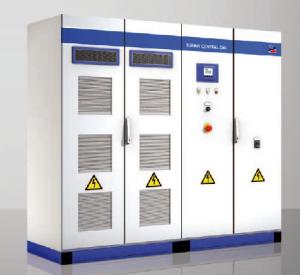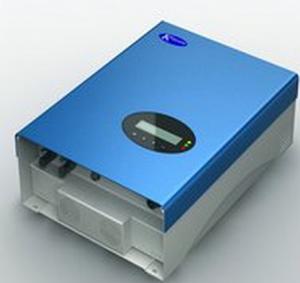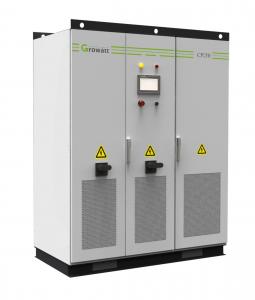250 Kw Solar Inverter - PV On-Grid Inverter with Good Quality from China
OKorder Service Pledge
OKorder Financial Service
You Might Also Like
Description:
CNBMSOLAR is a world-leading and Vertical integrated manufacturer of high-performance with Silicon,
Wafer, Cells, Modules, which convert sunlight into electricity for residential, commercial, and utility-scale
power generation.
The capacity of CNBMSOLAR is reach to 1GW, and make sure each year our shipment capacity is more
Than 700-800MWs, at the same time, we have set up the largest solar power station with our partner
in Ukraine.
CNBM is a Quality + Service oriented company with“Excellence at Each Step” approach, composed of
the finest components from TUV and IEC-certified partners around the world, CNBM modules consistently
undergo a variety of trials at the company’s Test & Development Centre, ensuring peak performance
capabilities. The company is committed to develop and provide the world with clean and renewable energy
to ease the energy shortages as well as human kind’s impact on the environment.
Data:
Isolation mode | No transformer | Rated power | 4(KW) |
Max. DC. Input power | 4.4(KW) | Max. Input voltage | 500(VDC) |
Max. Input current | 29.3(A) | MPPT range | 150~450(VDC) |
Rated AC output power(KW) | 4(KW) | Max. Output power | 4.2(KW) |
Rated Grid voltage(VAC) | 230 | Rated Grid frequency(Hz) | 50(Hz) |
Max efficiency | 97.10% | Euro efficiency | 96.40% |
Display | LCD | THD | <3% |
Power factor | ≥0.99 | MPPT Precision | 0.99 |
Communication interface | RS232;GSM | Electromagnetic compatibility | IEC61000-6-1/-2/-3/-4 |
Grid disruption | IEC61000-3-2/-3 | Grid detection | DIN VDE 0126 |
Overload operating | Automatically adjust the running peak | Internal consumption at night | 0(W) |
DC voltage ripple | Vpp < 10% | Protection class | IP65(outdoors) |
Anti-islanding protection | Vac;Fac | Cooling concept | Cooling method |
Operating temperature range | —25℃~60℃(>45℃drop) | Operating humid range | 0~95%(non-condensing) |
Dimensions(dxwxh) | 475*415*150mm | Weight | 20 (Kg) |
Altitude | 6000,>3000m start to drop |
|
|

FAQ:Could you pls introduce more about CNBM ?
CNBM Group is short for China National Building Materials Group Corporation, which is established in 1984 with approval from the State Council
CNBM Group is the largest comprehensive building materials industry group in China
The Group has a total asset of over RMB 360 billion, more than 180,000 employees and 17 subsidiaries
- Q: How does a solar inverter handle power quality disturbances?
- A solar inverter handles power quality disturbances by employing various protective measures. It typically includes features such as voltage regulation, frequency control, and surge protection. In the case of voltage fluctuations, the inverter adjusts the output voltage to maintain a stable power supply. Similarly, it monitors the grid frequency and adjusts its output frequency accordingly. Moreover, it incorporates surge protection mechanisms to safeguard against power surges and voltage spikes. Overall, a solar inverter efficiently manages power quality disturbances to ensure a reliable and stable electricity supply.
- Q: Can a solar inverter be used with solar-powered water pumps?
- Yes, a solar inverter can be used with solar-powered water pumps. A solar inverter helps convert the DC power generated by solar panels into AC power, which is required to operate most water pumps. This enables the solar panels to generate electricity, which is then converted by the inverter to power the water pump, making it feasible to use solar energy to operate water pumps.
- Q: Can a solar inverter be used in mobile or portable solar systems?
- Yes, a solar inverter can be used in mobile or portable solar systems. Portable solar systems often include a solar panel, battery, and inverter to convert the DC (direct current) power generated by the solar panel into AC (alternating current) power that can be used to power various devices and appliances. The inverter helps ensure compatibility and usability of the generated solar power in these mobile or portable setups.
- Q: Can a solar inverter be used with solar-powered agricultural equipment?
- Yes, a solar inverter can be used with solar-powered agricultural equipment. A solar inverter is an essential component that converts the direct current (DC) produced by solar panels into alternating current (AC) that can be used to power various electrical devices and machinery, including agricultural equipment. By integrating a solar inverter, solar energy generated by the panels can be efficiently utilized to operate and power agricultural tools and machinery, making it a sustainable and cost-effective solution for farmers.
- Q: What are the potential risks of over-discharging a battery connected to a solar inverter?
- The potential risks of over-discharging a battery connected to a solar inverter include reduced battery lifespan, decreased storage capacity, increased internal resistance, and potential damage to the battery cells. Over-discharging can lead to deep cycling, which can degrade the battery's performance and shorten its overall lifespan. It may also cause the battery to lose its ability to store energy efficiently, resulting in reduced storage capacity. Additionally, over-discharging can increase the internal resistance of the battery, leading to decreased efficiency and lower power output. In severe cases, over-discharging can cause irreversible damage to the battery cells, rendering them unusable and necessitating replacement.
- Q: How does a solar inverter handle variations in solar panel cleanliness?
- A solar inverter can handle variations in solar panel cleanliness by continuously monitoring the output power and adjusting the operating parameters accordingly. If the panels are dirty, the inverter will detect a decrease in the output power and adjust the voltage and current to maintain optimal performance. However, if the panels are excessively dirty, it can significantly impact the overall energy production and may require manual cleaning to ensure maximum efficiency.
- Q: Can a solar inverter be used with solar-powered electric vehicle charging stations?
- Yes, a solar inverter can be used with solar-powered electric vehicle charging stations. A solar inverter is responsible for converting the DC power generated by solar panels into AC power that can be used to charge electric vehicles. By using a solar inverter, the solar energy harvested from the panels can be efficiently utilized to charge EVs, making it an environmentally-friendly and sustainable option for charging stations.
- Q: What is the role of a solar inverter in preventing islanding?
- The role of a solar inverter in preventing islanding is to constantly monitor the electrical grid and immediately disconnect from it if it detects a fault or disruption. By disconnecting from the grid, the solar inverter ensures that it does not continue to generate power and create a self-sustaining island of electricity, which could pose a safety risk for utility workers attempting to fix the fault.
- Q: Can a solar inverter be used in a solar-powered electric vehicle charging station?
- Yes, a solar inverter can be used in a solar-powered electric vehicle charging station. A solar inverter is responsible for converting the Direct Current (DC) generated by solar panels into Alternating Current (AC) that can be used to charge electric vehicles. Therefore, it is an essential component in a solar-powered EV charging station, allowing the electricity generated from solar panels to be compatible with the charging needs of electric vehicles.
- Q: How does a solar inverter handle voltage stability in the grid?
- A solar inverter handles voltage stability in the grid by continuously monitoring the voltage levels and adjusting its output accordingly. It maintains a stable voltage by regulating the power output from the solar panels and injecting or absorbing reactive power as needed. This helps to stabilize the grid voltage and prevent fluctuations that can disrupt the operation of electrical devices and appliances connected to the grid.
Send your message to us
250 Kw Solar Inverter - PV On-Grid Inverter with Good Quality from China
OKorder Service Pledge
OKorder Financial Service
Similar products
Hot products
Hot Searches
Related keywords


























